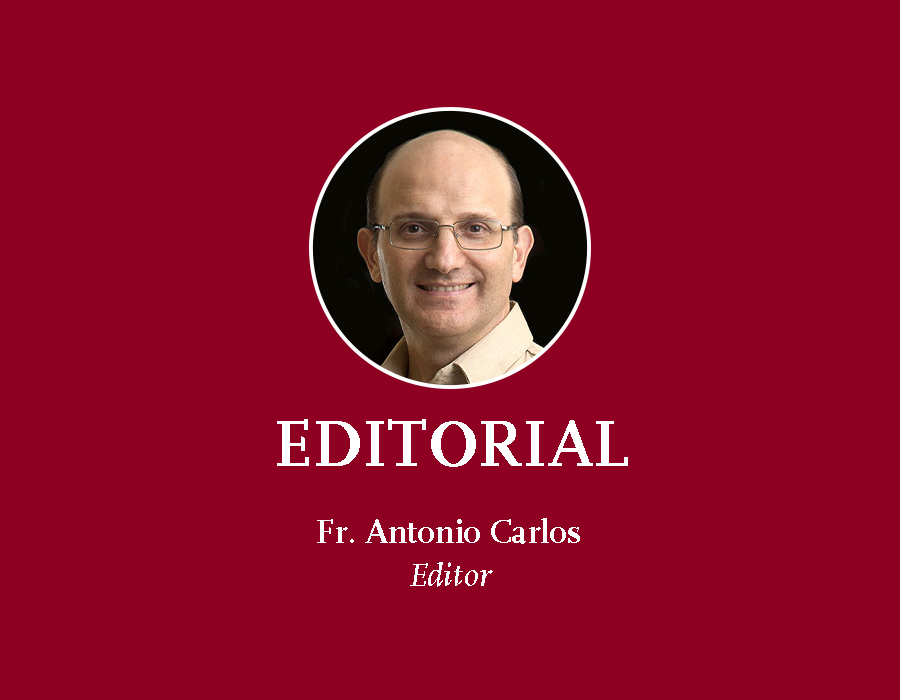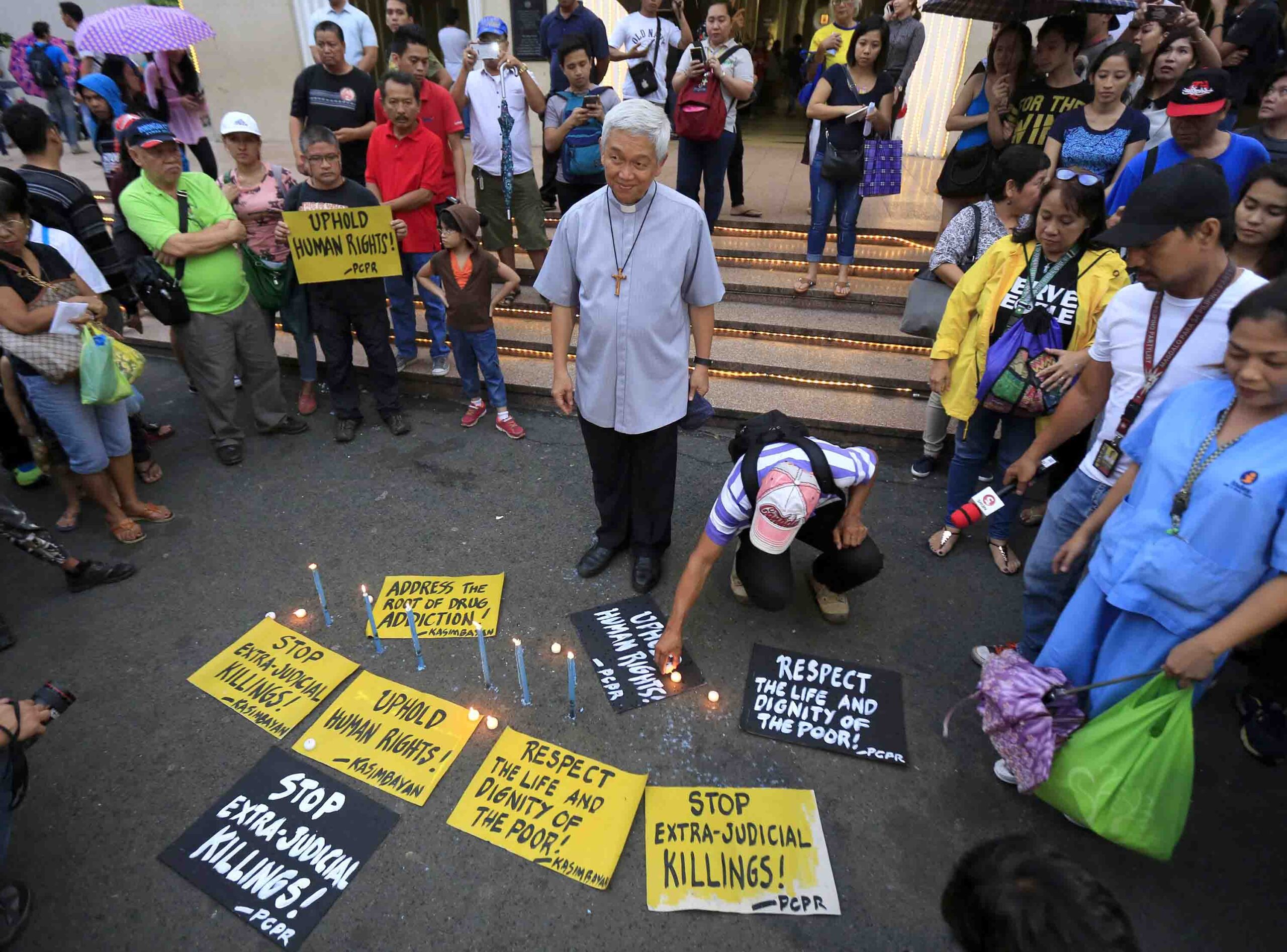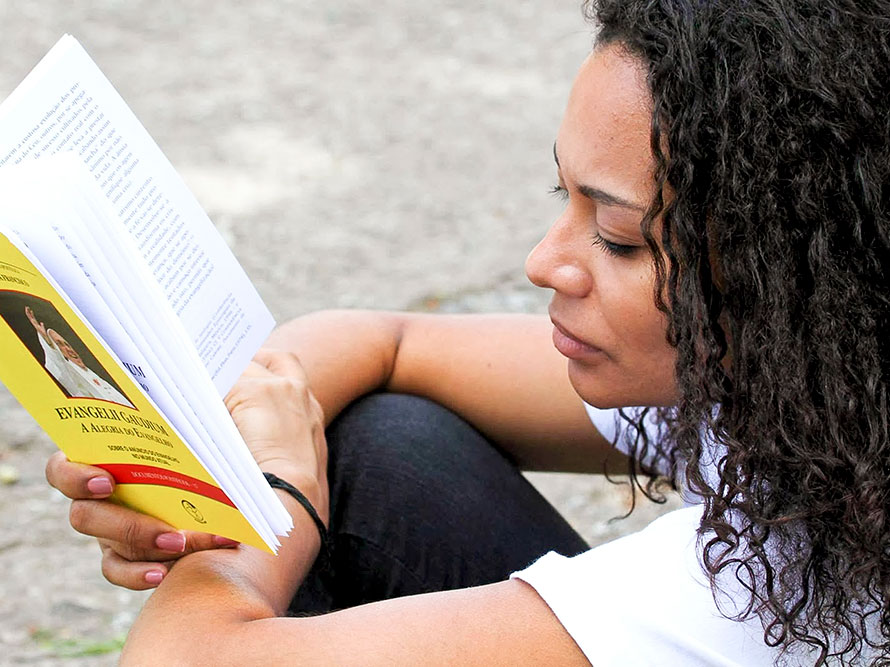Popular piety intuits a constancy in the relationship between Christ and his mother: in suffering and death and in the joy of the resurrection. The liturgical affirmation that God replenished the Blessed Virgin Mary with joy in the resurrection of her Son has been translated and represented, so to speak, in the pious exercise of the meeting of the Risen Christ with his Mother” (DPP, n. 149).
This meeting between the Risen Christ and the Virgin Mary is not found in Scriptures. The Bible provides accounts of various appearances of Jesus after His resurrection, but there is no specific mention of a meeting between Jesus and His mother, Mary, during this time.
However, there are many spiritual traditions that lead the faithful to meditation on this consoling and touching scene, such as the apocryphal writings, the private mystical writings, and the Christian art inspired by these.
Traditionally, Christian art and literature have explored the theme of the reunion of Jesus with His mother after His resurrection, imagining the emotional and meaningful encounter. These artistic interpretations, however, are not based on explicit biblical narratives but on the broader theme of familial relationships and the deep emotional connections associated with the resurrection of Jesus. Such depictions are often influenced by devotion and the desire to explore the human aspects of Jesus’ life and relationships.
In the Philippines, the scene of the encounter of Jesus with His mother is included in the Pasyong Mahal, and has become so much a part of Filipino Holy Week. Since biblical accuracy is not one of the outstanding traits of popular devotions, the only basis that this tradition has is the certainty in the Filipino heart that if there is someone with whom a son or daughter would usually share first his or her achievement, it will be his or her mother.
Moreover, the Salubong, in a certain way, invites the faithful to join the Virgin Mary as she ends her period of mourning (babang–luksa), and to share in her joy over the resurrection of her Son (CBCP, Filipino Spirituality, n. 50).
The resurrection of Christ possesses a rich and deep meaning and salvific importance. First, it confirmed everything that Christ had done and taught. Second, through His resurrection, He fulfilled the prophecies of the Old Testament, promising a Savior for the whole world. Third, it confirmed the divinity of Jesus. Fourth, it brought humankind a share in the new life of being adopted sons and daughters of the Father in the Holy Spirit. Lastly, in view of all these, the Risen Christ is the principle and source of the future resurrection of humankind (CFC, n. 621-625).
SALUBONG
This procession is a popular Easter catechesis. “The darkness of the night symbolizes sin and death; the risen Jesus travels through the cities of the world to announce to Mary and the whole Church his triumph over sin and death; the encounter with the risen one restores joy to the whole Church, which celebrates in the Eucharist the saving encounter with Jesus” (Theological–Historical Commission, Jesus Christ: Word of the Father, n. 104).
In practice, there are two possibilities regarding the time the Salubong is held: after the Easter Vigil or before the Mass at Easter dawn. However, since the elements of darkness and light play an important role in the whole drama, it is highly suggested that the latter be chosen. This means that the two processions will begin while it is still dark, and reach its culmination– the meeting, as dawn breaks.
Besides, historically speaking, holding the Salubong at dawn dates back to the Spanish time and is the common practice in many parishes until now. The most important images for the processions are that of the Risen Christ and the Virgin Mary covered with a black veil removed by a child dressed as an angel as the Regina Caeli is sung. The images of the women disciples may follow our Lady, since they first visited the tomb on early Easter Sunday morning (Mt. 28: 1; Mk. 16:1; Lk. 24:10; Jn. 20:1).
In 1971, the Congregatio pro Culto Divino granted the petition of the CBCP to make the Salubong the Introductory Rite of the Mass at Easter Dawn. The formulary was prepared to fully incorporate the Salubong into the Mass at dawn of Easter Sunday, and was approved by the CBCP in January 1993.
During the Lenten season, which is “the fitting climb to the Holy mountain of Easter,” popular religious practices and religious traditions abound among Filipino Catholics–Pabasa, Via Crucis, Visita Iglesia, Senakulo, Processions, etc.–and reach their peak during Holy Week.
But after this most awaited week, everything seems to die down, as if Easter ends with the Salubong. During the Easter season, which prolongs the celebration of Easter, celebrating as one feast day, the “great Sunday,” the fifty days from Easter Sunday to Pentecost Sunday (GNLYC, n. 100), nothing seems to preoccupy Filipino Catholics as a way of celebrating the holy season.
Perhaps this is due to the focus on other activities such as the Mayflower offering to the Virgin Mary in churches, the fiesta celebrations and Santacruzan in many towns, and excursions or outings to beat the summer heat. Hence, a special effort is needed if Filipino Catholics “are to become more aware of the full truth and reality of Christ’s Resurrection. For this is the unique key to deeper personal understanding of the living Christ, and of our authentic living out the Catholic Faith” (CFC, n. 617). Getting inspiration from the religiosity of Lent and Holy Week, religious devotions are proposed in the hope of fostering Easter religiosity–Per Crucem ad Lucem (“Through the Cross to the Light”).
VIA LUCIS
In the same manner that holding the Via Crucis is among the marks characterizing the Lenten season, the Via Lucis should be among the marks of the Easter season. The Via Lucis is a meditation on the post-resurrection appearances of Christ.
St. Ignatius of Loyola included a meditation on the apparitions of the Risen Lord in the Spiritual Exercises. It is composed of fourteen events taken from Scripture and the Church’s tradition, from Resurrection to Pentecost. The official catechetical text on the Year of Jesus Christ before the Great Jubilee of the Year 2000 endorsed the Via Lucis to promote Easter spirituality, and the official prayerbook for the Jubilee Year 2000 consequently included it. At the moment, there are available prayer booklets on the Via Lucis that can be used by the faithful and the parishes in doing the said devotion during the Easter Season inside the church, around the church grounds, in smaller Christian communities of the parish, etc.
If the image of the Nazareno is brought around the parish during the Lenten season for the Via Crucis, why not bring out the image of the Risen Christ for the Via Lucis during the Easter season? In this sense, one can legitimately speak of “a spirituality of the Via Lucis that follows and crowns the tried and true traditional spirituality of the Via Crucis.”
Moreover, the parishes or groups of faithful may consider organizing an Easter-Marian Visita Iglesia or pilgrimage to seven churches during this season. The prayer material can be that of the Via Lucis, while visiting Marian shrines, given the Marian month of May.
THE GREAT EASTER PROCESSION
The sacred period of fifty days of the Easter season ends with Pentecost Sunday, “when the gift of the Holy Spirit to the apostles, the beginnings of the Church, and the start of its mission to all tongues and peoples and nations are commemorated” (PS, n. 7). The importance of the Solemnity of Pentecost gives a sufficient basis in organizing a procession that can help mark the significance of this day and the whole Easter season in general.
“The disciples’ encounter with the Risen Christ is constantly described in terms of seeing, sometimes even with ‘touching’” (see Mt. 28:9; Lk. 24:39; Jn. 20:27). “These appearances of the Risen Christ have three significant characteristics.
First, they were different from visions totally within history since the Risen Christ showed Himself as transcending the ordinary limits of time and space. Second, except for Paul, the Risen Christ appeared only to those who could identify Him with the earthly historical Jesus. These thus became the once-and-for-all original witnesses founding the Church. The Apostolic Age closed with their passing; from then on, Christians are those ‘who have not seen and have believed’ (Jn. 20:29). Third, and most importantly, the appearances did not remove all doubts nor the need for faith” (CFC, n. 640b, n. 641-642).
The procession will be led by the image of the Risen Christ, followed by the images of the Virgin Mary, the women disciples, the apostles, and male disciples. Tableaus depicting the appearances of the Risen Christ and His Ascension may be included. The procession is closed by the tableau of the Descent of the Holy Spirit. The procession may be held on the eve or on Pentecost Sunday.
































